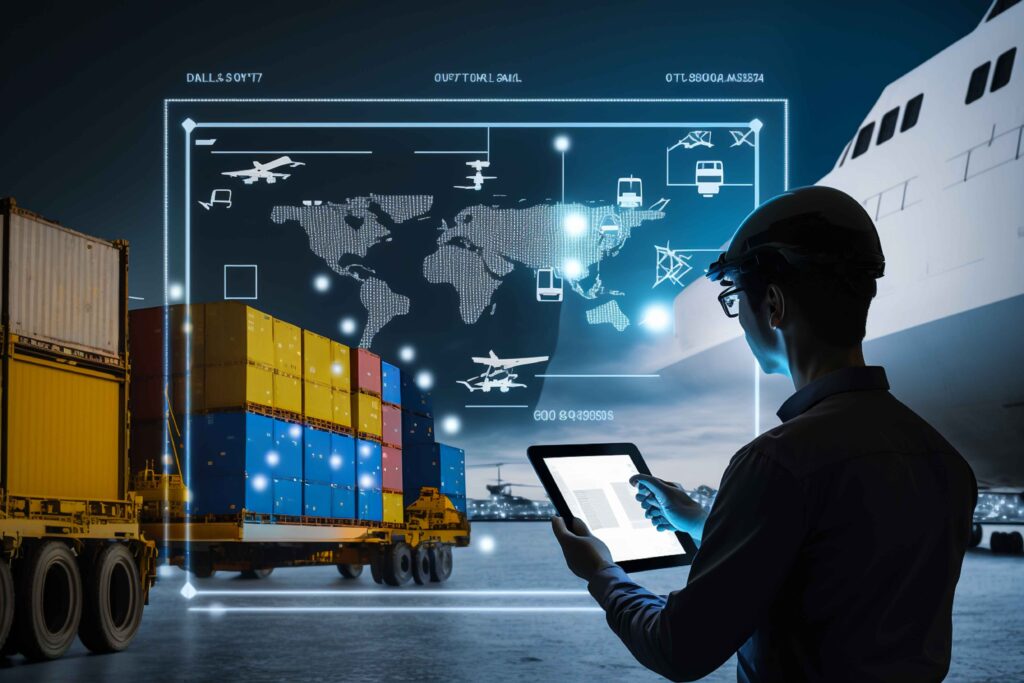Introduction
We are witnessing a fundamental shift in how goods move around the world. The logistics industry, long considered traditional and resistant to change, is experiencing a digital revolution that is reshaping every aspect of supply chain management. From the smallest local delivery to the most complex international shipment, technology is creating new possibilities for efficiency, transparency, and customer satisfaction that were unimaginable just a decade ago.
This transformation goes far beyond simply digitizing existing processes. It represents a complete reimagining of how supply chains operate, how information flows between stakeholders, and how businesses can create lasting competitive advantages through intelligent logistics management. For companies involved in moving goods—whether as manufacturers, retailers, or logistics providers—understanding and embracing this digital revolution is no longer optional; it’s essential for survival and growth in the modern economy.
The Current State of Digital Logistics
Traditional logistics operations often relied on manual processes, paper-based documentation, and limited visibility across the supply chain. While these methods have served the industry for decades, they create inefficiencies that modern businesses can no longer afford to ignore.
Digital logistics platforms are replacing these legacy systems with integrated solutions that provide real-time visibility, automated processes, and data-driven insights. The result is a more responsive, efficient, and reliable supply chain that can adapt quickly to changing market conditions and customer demands.
Key Technologies Driving Change
Real-Time Tracking and Visibility
Modern logistics operations demand complete visibility across the entire supply chain. GPS tracking, RFID technology, and IoT sensors provide real-time location data, environmental conditions, and shipment status updates that enable proactive management of potential issues.
This level of visibility allows businesses to optimize routes, predict delivery times more accurately, and provide customers with detailed information about their shipments. The ability to track goods from origin to destination has become a basic expectation rather than a premium service.
Artificial Intelligence and Machine Learning
AI and machine learning algorithms are revolutionizing logistics planning and optimization. These technologies can analyze vast amounts of historical data to predict demand patterns, optimize routing decisions, and identify potential supply chain disruptions before they occur.
Predictive analytics enable businesses to make more informed decisions about inventory management, capacity planning, and resource allocation. The result is reduced costs, improved service levels, and better utilization of assets across the supply chain.
Automation and Robotics
Warehouse automation has moved beyond simple conveyor systems to include sophisticated robotics, automated sorting systems, and AI-powered inventory management. These technologies reduce labor costs, improve accuracy, and enable 24/7 operations that can respond quickly to customer demands.
The integration of automation technologies with digital logistics platforms creates seamless workflows that minimize manual intervention and reduce the potential for errors throughout the fulfillment process.
Blockchain for Transparency and Security
Blockchain technology is addressing long-standing challenges related to documentation, verification, and trust in international logistics. By creating immutable records of transactions and shipment movements, blockchain enables greater transparency and reduces the risk of fraud or documentation errors.
This technology is particularly valuable for complex international shipments that involve multiple parties, currencies, and regulatory requirements. Blockchain can streamline customs processes, reduce paperwork, and provide all stakeholders with access to verified information.
Benefits of Digital Logistics Implementation
Enhanced Customer Experience
Digital logistics platforms enable businesses to provide customers with unprecedented visibility into their shipments, accurate delivery predictions, and proactive communication about any issues or delays. This level of service has become a key differentiator in competitive markets.
Cost Optimization
Automated processes, optimized routing, and better resource utilization typically result in significant cost reductions. Many businesses report logistics cost savings of 15-30% after implementing comprehensive digital logistics solutions.
Improved Operational Efficiency
Digital systems eliminate many manual processes, reduce paperwork, and provide automated workflows that minimize the potential for errors and delays. This improved efficiency allows businesses to handle larger volumes with the same resources.
Conclusion
The digital transformation of logistics is not just a trend—it’s a fundamental shift that is redefining how businesses operate in the global marketplace. Companies that embrace digital logistics technologies today are positioning themselves for sustained competitive advantage, improved operational efficiency, and enhanced customer satisfaction.
The journey toward digital logistics transformation requires strategic thinking, careful planning, and commitment to change management. However, the benefits—reduced costs, improved visibility, enhanced customer experience, and increased operational flexibility—make this investment essential for long-term success.
As we look toward the future, the pace of technological innovation in logistics will only accelerate. Autonomous vehicles, artificial intelligence, and advanced analytics will continue to create new possibilities for optimization and efficiency. The companies that begin their digital transformation journey today will be best positioned to capitalize on these future innovations.


